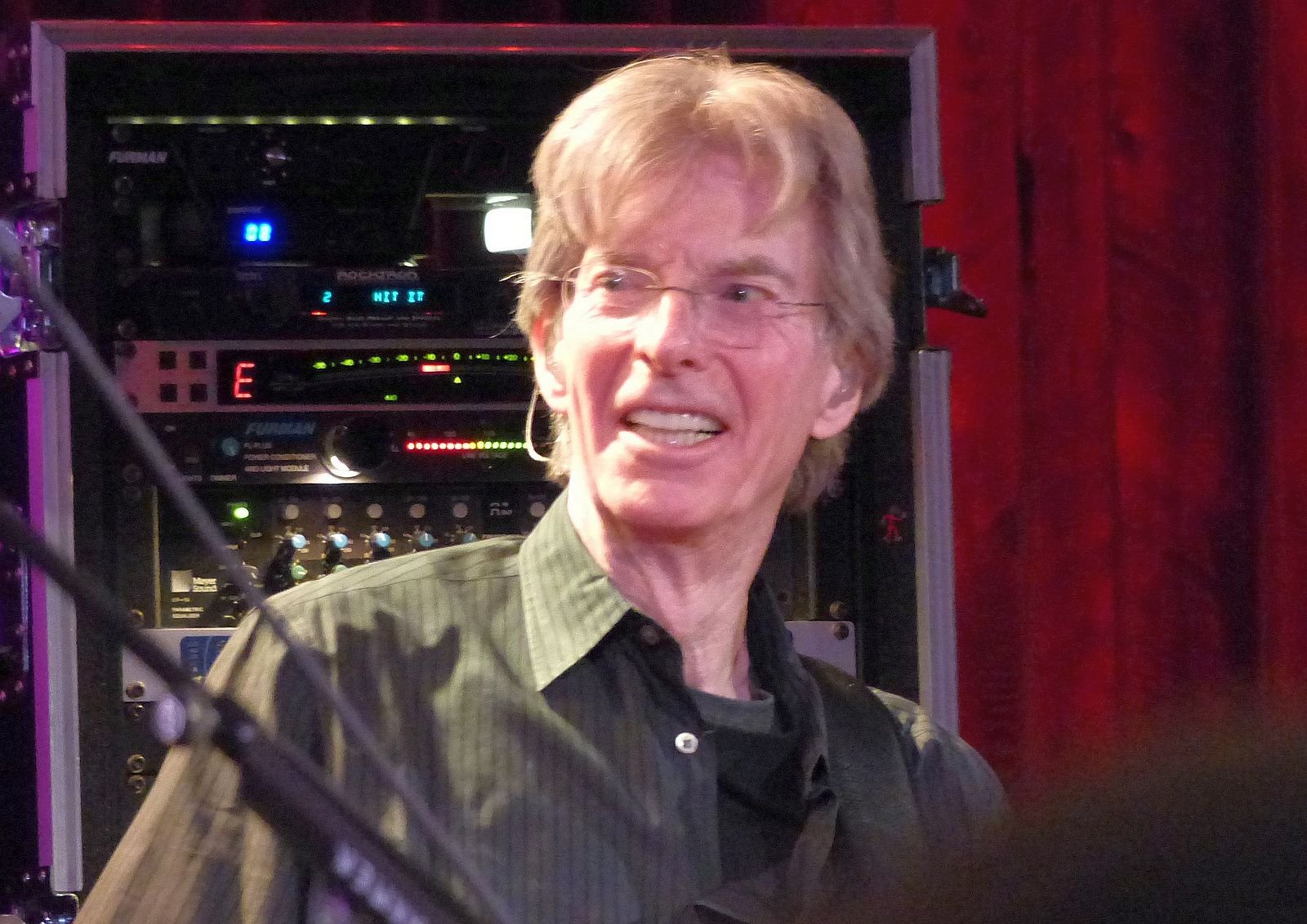Table of Contents
Phil Lesh, a legendary bassist and founding member of the Grateful Dead, is one of rock music’s most influential figures. Lesh is known for his improvisational style. He helped shape the Grateful Dead’s unique sound. The band’s sound combined elements of rock, jazz, blues, and folk. Unlike many bassists who act as the rhythmic foundation of a band, Lesh turned his bass into a lead instrument. This created a signature sound that resonated with fans. It also inspired countless musicians. In this post, we’ll take a closer look at his journey. We will explore his distinctive playing style and his contributions to sound technology. We will also examine his lasting impact on music.

Early Days: From Classical Music to Rock Pioneer
Phil Lesh’s journey to becoming a rock legend is unconventional. Born in Berkeley, California, in 1940, Lesh began his musical career studying classical music and playing the trumpet. His early experiences as a trumpet player and classical composer gave him a deep understanding of music theory and composition. Lesh’s background was different from many rock musicians of his generation. It was rooted not in rock and roll, but in jazz and classical music.
In 1965, Jerry Garcia invited Lesh to join a local group that would soon be known as the Grateful Dead. Lesh had never played bass before. He quickly adapted to the instrument. He brought a unique approach influenced by his classical and jazz background. His unconventional style added depth to the band’s sound and became one of the hallmarks of the Grateful Dead. Lesh’s bass playing often moved beyond traditional rhythmic support. It explored melodic lines. These lines allowed him to play a central, almost orchestral role within the band.
The Grateful Dead Sound: A New Role for the Bass Guitar
Phil Lesh didn’t just play bass; he redefined what it meant to be a bassist in rock music. Traditional rock bassists often act as the band’s backbone, playing rhythmically with the drummer to maintain a steady beat. Lesh, however, saw the bass as a lead instrument. He weaved complex melodies and harmonies. These interacted dynamically with the other musicians. He used an improvisational approach. This allowed the music to evolve naturally during live performances. This method led to the Grateful Dead’s famous “jam band” style.
This approach transformed each Grateful Dead concert into a unique experience. Lesh and his bandmates played long-form improvisations. These could last several minutes or even hours. They blended songs together and explored different musical ideas. Lesh’s style was pivotal. It created immersive, free-flowing soundscapes that characterized the Dead’s live shows. This encouraged the audience to get lost in the music.
For more on Lesh’s background and the early days of the Grateful Dead, check out this article from Grateful Web.
Redefining Bass Playing: The Melodic Improvisation of Phil Lesh
Phil Lesh’s bass lines were anything but conventional. Inspired by his knowledge of classical counterpoint, he played with a sense of harmonic complexity rarely found in rock music. While most bass players emphasize simple rhythms, Lesh created melodic patterns that complemented and sometimes even led the rest of the band. His improvisational lines intertwined with Jerry Garcia’s guitar. They also connected with Bob Weir’s rhythm guitar and the dual drumming of Bill Kreutzmann and Mickey Hart.
The Grateful Dead’s live performances were legendary, with no two shows alike. Lesh’s playing allowed the band to explore diverse musical landscapes. They shifted effortlessly from one genre to another. This ranged from blues to country, and jazz to psychedelic rock. His approach helped the Grateful Dead develop a loyal fanbase known as “Deadheads.” These fans followed the band across the country. They were eager to experience the spontaneity of each concert.
Innovations in Sound Technology: The “Wall of Sound”
In the early 1970s, Lesh’s influence went beyond his bass playing. He became a key figure in developing the “Wall of Sound.” This groundbreaking sound system was created with the help of sound engineer Owsley “Bear” Stanley. It was designed to deliver the clearest audio experience possible. It consisted of a massive speaker setup. This setup allowed every instrument to be amplified individually. This enabled the Grateful Dead to perform without traditional monitors or amplifiers.
The Wall of Sound set a new standard for live concert audio. It ensured that every fan in the audience hear the music with unparalleled clarity, no matter where they were seated. It helped define the live music experience. It gave the Grateful Dead’s fans an immersive audio experience. This experience was ahead of its time. The Wall of Sound was eventually abandoned because of its cost and complexity. However, its impact on live concert sound can still be felt today.
To learn more about the Wall of Sound and its legacy, check out this article on Live for Live Music.
Lesh’s Influence and Legacy in the Jam Band Movement
Phil Lesh’s innovative style influenced an entire generation of bassists and musicians. He inspired bands in the jam band scene. These bands include Phish, Widespread Panic, and the String Cheese Incident. They adopted similar improvisational approaches to live performance. His influence reached jazz musicians and other genres. It bridged gaps between rock, jazz, and classical music. This demonstrated how the bass could take on a complex and creative role.
Even after the Grateful Dead disbanded in 1995, Jerry Garcia’s death did not stop Lesh. He continued to perform and spread the band’s music. He formed Phil Lesh and Friends, a rotating group of musicians. This group allowed him to explore the Grateful Dead catalog. He also experimented with new arrangements and styles. Through Phil Lesh and Friends, he has collaborated with various artists from different genres. This collaboration keeps the spirit of the Grateful Dead alive. It also introduces the music to new generations.
Continuing the Journey: Terrapin Crossroads
In 2012, Lesh opened Terrapin Crossroads, a music venue in San Rafael, California, dedicated to live music and community engagement. The venue became a gathering place for musicians and fans. It offered a space where musicians could experiment and share their music. Terrapin Crossroads has hosted countless concerts and jam sessions. It serves as a bridge between Lesh’s musical past and his ongoing journey.
At Terrapin Crossroads, Lesh continues to play with a variety of musicians. He collaborates with both established artists and emerging talents. This further cements his role as a mentor and pioneer. Through this venue, Lesh has fostered a sense of community. He has connected fans, musicians, and friends. He stays true to the collaborative spirit that defined the Grateful Dead.
Phil Lesh’s Legacy: A Lasting Impact on Music
Phil Lesh’s legacy goes far beyond his role as a bassist. His dedication to musical exploration and his willingness to push boundaries have left a lasting impact on the music industry. Lesh has revolutionized the experience of live music through his innovations in bass playing. He has also significantly contributed to sound technology. His influence resonates with musicians across genres. His work with the Grateful Dead is an essential part of rock and psychedelic music history.
Today, Lesh remains active in the music scene, continuing to perform and share his passion with fans. For many, he is more than just a musician. He is a pioneer. His work has changed the possibilities of live music. Phil Lesh embodies the adventurous spirit that defined the Grateful Dead. He continues to inspire those who follow his journey by performing on stage or fostering new talent.
How Google Ads Uses Google Analytics Audiences When Linked?
Discover more from Latest News, Trending Topics - Topics Insider
Subscribe to get the latest posts sent to your email.

